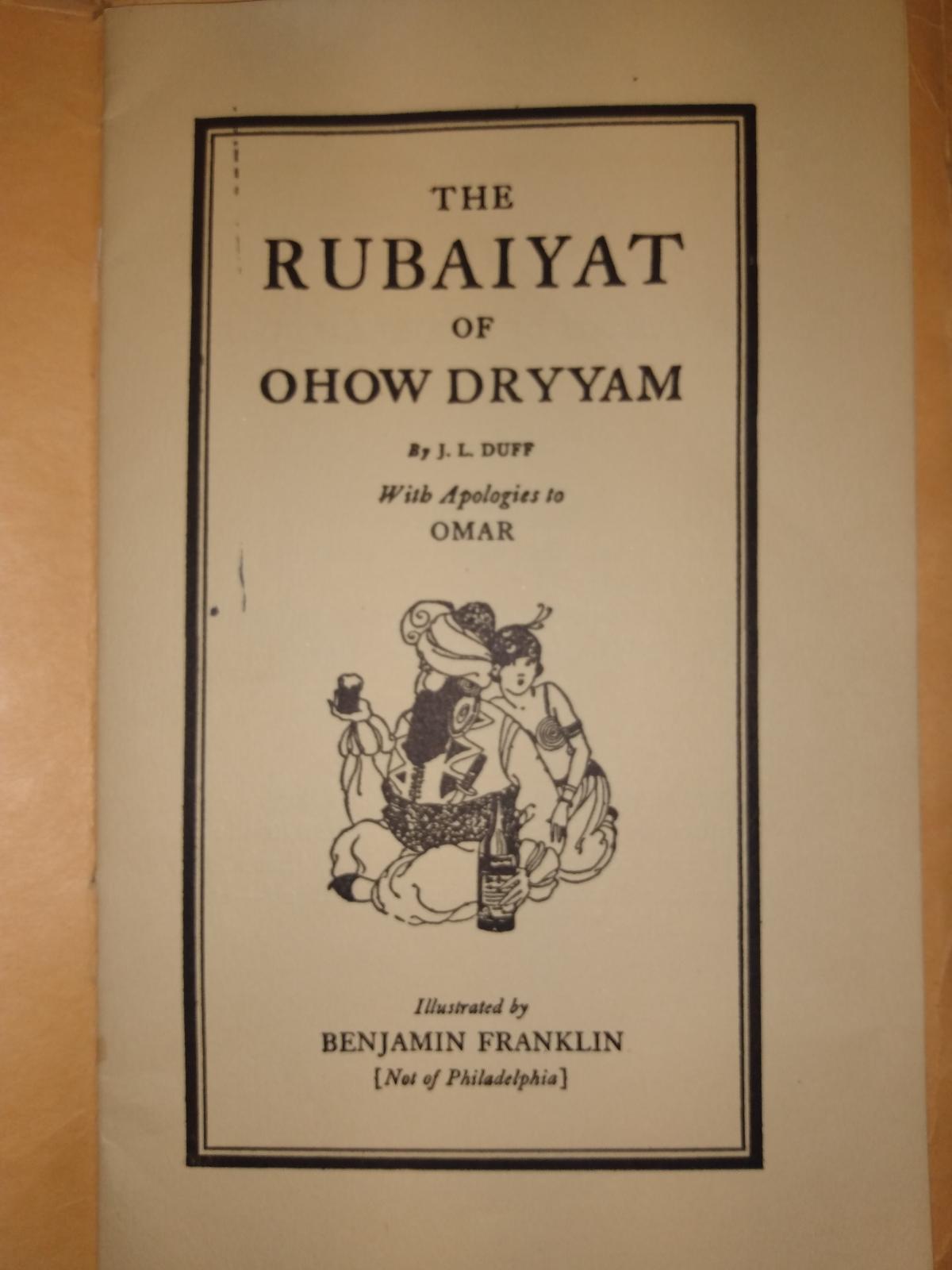Who’s heard of Rubáiyát of Omar Khayyám? Not me! That is until I had to read and understand it for an English course. Woe is me! I’ve never been much of a reader, so when poor ‘ole me had been tasked to take on an old Persian, philosophical book about religion and death with a dash of skepticism thrown into the salad bowl? Let me tell you, I was not looking forward to it. But we’re here now, so you can guess how that went.
In 1859, an English translation came out, by FitzGerald, marking a new age for Rubáiyát of Omar Khayyám- which had been in the dust before this translation. After the initial, first edition by the Englishman, hundreds have been released throughout the years. It has turned into a popular gift to give- very popular. Which is weird, because, again, I’ve never heard of the book. Am I too young? Who knows! I can’t even drink alcohol yet, but that is exactly the topic we are to discuss today. Let me introduce you to:
Rubáiyát of Ohow Dryyam by J.L. Duff
Illustrated by Benj. Franklin [not of Philadelphia]
(see Figure 1)
Easily digestible book, with a grand total of seventeen, four lined, stanzas and a picture on each flip of the page. It is a parody of the Rubáiyát; it talks of alcoholism and sobriety, hence the word-play name: ‘oh, how dry I am’. It has great jokes and it’s like a gateway drug into the original. (In no way am I advocating for gateway drugs!) It is barely fifteen pages, and a preview into what you could be getting into with the actual Rubáiyát of Omar Khayyám.
(See Figure 2 and Figure 3, for illustration examples!)
As my interest had not been piqued by the thought of reading another edition of the two-hundred stanza, poetry translation, I had gone to the parody section of the archives. As a huge fan of Gary Larson (the Far Side Comics author), I loved the style of the illustrations. Not to mention it is an extremely short piece! Again, not a reader, so when I realized all my check boxes had been checked? I was sold!
Now, I am heavily biased towards the Rubáiyát of Ohow Dryyam; I think it’s the best edition. Not only because of its simplicity, but some parodies tend to not honor original content, but this one? It really takes the first edition, and more! Putting its own original spin on it, too. It follows the same form of the original- four lined stanzas with each stanza having a roman numeral as a title. It has the same skepticism and a sarcastic, philosophical tone. I mean, really, it has everything and more…
(See Figure 4, for example of tone!)
Although, it’s not about religion or anything deep-hitting, no-
It’s about alcoholism. This piece was published in 1922, and you know what else happened in those times (1920-1933)? A nationwide, constitutional law, prohibiting everything about alcohol: the production, transportation, and sale. It’s called ‘Prohibition’; although, I must say that name is very, not creative- for how creative Rubáiyát of Ohow Dryyam is. Alcoholism is an addiction- point blank. And cold turkeying the entire nation from alcohol- a nation that definitely enjoys a glass or two of beer at the local tavern every night- was not the move for America. Rubáiyát of Ohow Dryyam shows the hardships these citizens are forced to face, but keeps a lighthearted tone through jokes about the journey to sobriety.
As per its title ‘Oh how dry am I’, we have a ton of sobriety jokes. For example, in the fourth stanza of the seventeen stanza long piece, we see a relatable joke:
“Come, fill the Cup, and in the Coffee-house
We’ll learn a new and temperate Carouse—”
*carouse: drinking a lot of alcohol with a robust attitude.
We can see that most alcoholics turn to the other, very popular, addictive drink called coffee. Usually one only drinks a cup or two of coffee, but to fuel the journey to sobriety, they have to drink cups upon cups of coffee. Rubáiyát of Ohow Dryyam shows the struggle of addiction, in its humorous ways.
In conclusion, I’d say give it a try, and follow the rest of this exhibit for more content!
*This version is also available digitally, so I’d recommend you read this first and then take a jab at the colossal that is the Rubáiyát of Ohow Dryyam.
Link: https://www.gutenberg.org/cache/epub/23338/pg23338-images.html





